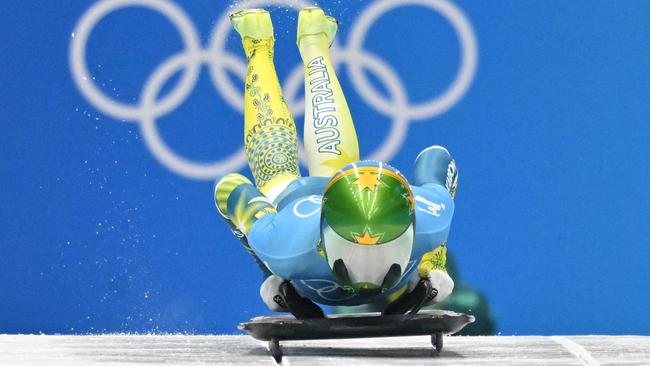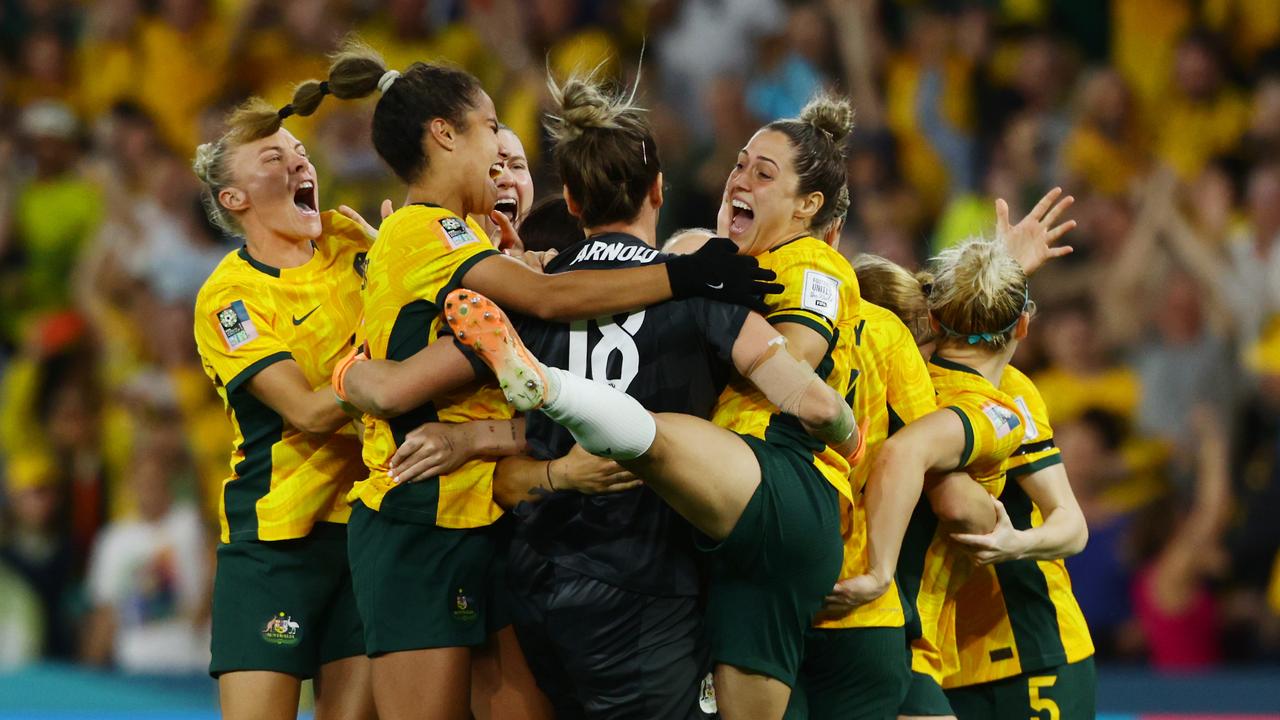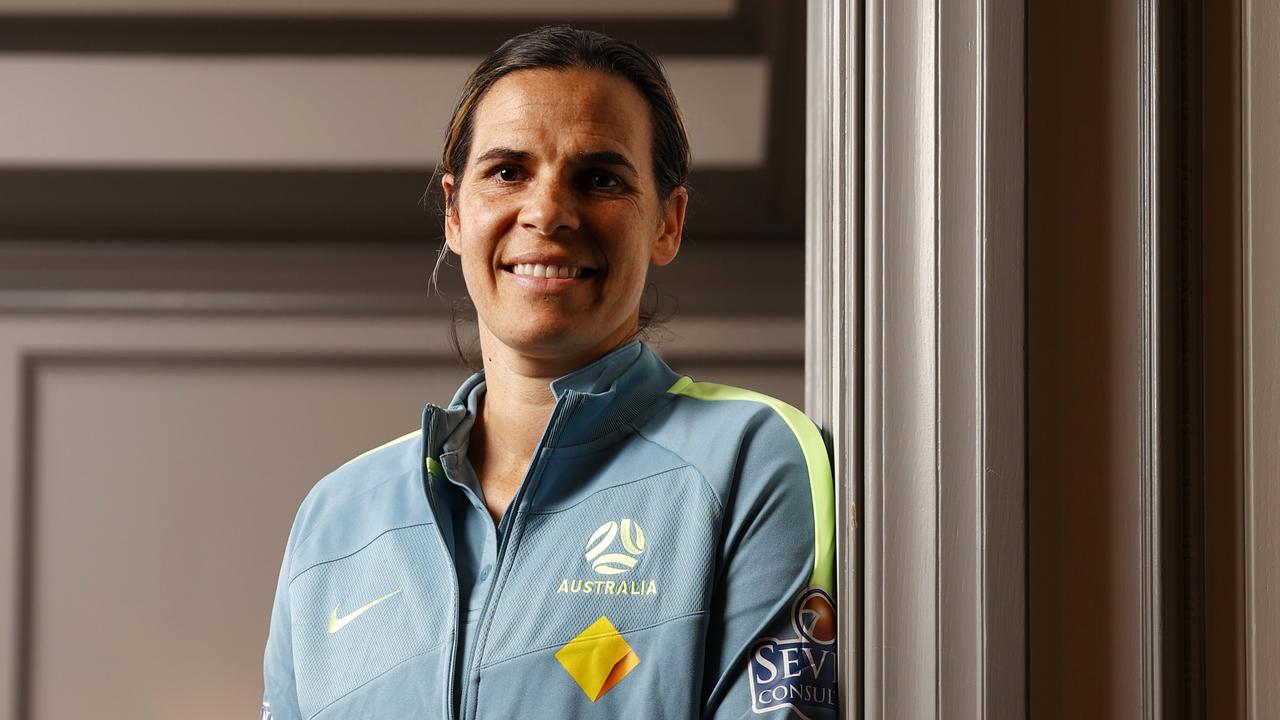Insight: Winter Olympian Jackie Narracott opens up on the concussion issues that nearly ended her career
Winter Olympian Jackie Narracott would walk the streets feeling like she was in a drunken haze, but in reality, she hadn’t touched a drop of alcohol. She opens up on her concussion fight.

CODE Insight
Don't miss out on the headlines from CODE Insight. Followed categories will be added to My News.
Jackie Narracott was walking around the streets of London feeling like she’d had a few too many drinks at the pub.
The problem was she hadn’t touched a single drop.
For someone who has made a sporting career out of cannoning down an ice track head first at speeds of more than 130 km/h, there is not much that scares the Queensland skeleton racer.
But this did.
“I couldn’t walk around town without feeling like I was drunk,” Narracott said.
“I would go for a 15-minute walk along flat ground and I felt drunk.
“Trying to talk through (basic things) gave me a headache. I couldn’t look at screens, I couldn’t read. It really ticked every single box, which was quite scary.
“I know my husband Dom (Parsons, former British skeleton racer) was sitting there going, ‘This is concerning’.”
Australia’s first-ever sliding medallist at the Winter Olympics, Narracott had experienced concussion in her sport before.
But this one – her third – was like nothing she had encountered previously.
Her first concussion was caused by a crash; the second was what she described as cumulative, but the third could have spelt the end of her career.
“The third one – the big one – was an initial concussion which I thought had settled, but then it turned into post-concussion syndrome,” Narracott said.
“If I hadn’t stopped sliding when I did then there is every chance (it could have ended my career).
“The recovery from the last one was six months as it was. If I had kept sliding, we didn’t know which way it was going to go.”

Narracott’s concussion battle started in her first run back for pre-season training in Calgary following the 2018 PyeongChang Winter Games.
The head injury was caused by the jolting from a bump in the track. Bumps and deviations on the track surface are amplified by the speed and force which the sliders travel on the ice.
“Calgary is quite an old track … and on one of the 270 degree turns, there was a bump in the middle of it,” Narracott said.
“We knew about it and what line you take through the corner makes a difference to whether you hit it or not. I happened to hit it the first time.
“I had a bit of a headache, but it calmed down. But the second run I went and hit it again.
“The next day, I could not look at my phone or any screen for more than about 30 seconds.
“I went to training the following day, usually we track walk before most sessions and that gave me a headache and I thought ‘OK, I’m not sliding today’.
“I repeated that over two or three days then when I tried to warm up, I bent over to stretch my hammy and that made me dizzy. I thought ‘I’m definitely not recovering’.
“I was also my own worst enemy because I was away on my own, I didn’t have a coach, didn’t have a physio, didn’t have a doctor. I was just trying to manage it based on what I knew of concussion previously. I kept trying to go to training, I didn’t rest, so the symptoms kind of stayed probably longer than they should have.”
Narracott took 10 days off before she attempted to get back on the ice as the season headed to Europe for competition.
All was going well until she took to a bumpy track in Austria and the symptoms surfaced again.
“I was coming off the track and people were asking me questions and I was super slow to respond and didn’t quite feel right,” Narracott said.
“Thankfully at that point I was with the Canadian program – I had a coaching arrangement with them – and they looked at me and said ‘You might need to sit this one out, you are super emotional over things you should not be emotional about’.

“Then we went to St Moritz in Switzerland. It’s not bumpy in the slightest. It is the best track to slide, hands down, and I did one run and it made me dizzy.
“In the end, the Canadian coaches and chiro made the call for me and said ‘We’re not comfortable putting you down the track’ …. which I am eternally grateful for.
“If it wasn’t for them saying, ‘We’re not comfortable putting you down’, I would have sucked it up and kept sliding, for sure.”
Narracott returned to her base in the UK where she felt drunk walking around town.
She was advised to see a neurologist and was not allowed to fly home to Australia for several months.
Narracott was diagnosed with post-concussion syndrome and her vestibular system was found to be “all out” of whack. It would take six months before Narracott was given medical clearance to be able to slide again.
As part of her rehab, she did eye training to help with depth perception and exercises “spinning around in circles”.
“I started off on an office chair just spinning around and stopping and then I had to focus on a specific point to make sure that my eyes stopped when they needed to,” she said.
“Then that progressed to doing similar things in the gym. There is Pilates equipment that spins on ball-bearings so I would put a box on that, lie on that, spin myself around and stop that and then try to focus on something.
“That then progressed to lying on the vibrating platforms because they wanted to make sure that I could handle the bumpiness.”
Narracott has only ever been scared once standing at the top of a run.
That time came when she finally made her return to the track after she was cleared to make a return.
But Narracott had already had the hard conversations with her sports psychologist ahead of her return about what would happen if her symptoms returned – her goal of making it to the 2022 Winter Games in Beijing would be over.

“The first run back in Whistler was by far and away the most scared I have ever been on a sled,” Narracott said.
“Whistler is the fastest track in the world, but it is also one of the smoothest tracks in the world, so I wanted to start there.
“I started at the entrance of corner six and no one starts at corner six unless they are an absolute rookie. I was just standing there thinking ‘I shouldn’t be this scared, I should not be this nervous’.
“I’d had the conversation with my sports psych before I went away. Plan A, everything goes to plan and you’re back, going to Beijing. We also had plans B and C – C being it’s cut and dry, you’ve got symptoms, it’s done.
“But if I had another concussion in the years between that and Beijing, I had spoken to mum and dad, and to Dom, about it and one more concussion and I was done.
“When I did the first run from the top, I just remember it being complete relief.”
Fortunately, Narracott’s return was trouble-free. But getting to Beijing would still require plenty of management over the next two years.
She limited the number of runs she did to two a day and would never slide more than three days in a row and on the bumpier tracks, she would sometimes sit out completely.
The use of a device called a Q-collar also helped.
“It’s a piece of plastic that sits around the base of your head and puts pressure onto your carotid arteries,” Narracott said.
“It ever-so-slightly increases your intracranial pressure, so your brain doesn’t slosh around quite so badly or as much when you go through a little bump or have a really strong hit.
“So they use it a lot in Lacrosse, in the NFL and a few other sports in the US … that thing is a game changer.
“It’s finally legal for us to race in it now. They used to let us slide in it in training, but it was not until the last season that they finally made it legal for us to race in it, too.”
Narracott made it to the Beijing Games and was rewarded with a silver medal in the skeleton – Australia’s first ever sliding medal at the Winter Olympics.
“It was definitely my silver lining,” said Narracott, whose uncle, Paul Narracott, was the first sportsperson to represent Australia at both a summer and Winter Olympics.
“To get there first of all and to come away with a medal, it’s still surreal.
“There was the history side of things, but also there was the chance that I was not even sure if I was going to be there.
“Thankfully, now I’m healthy and fully recovered.”



